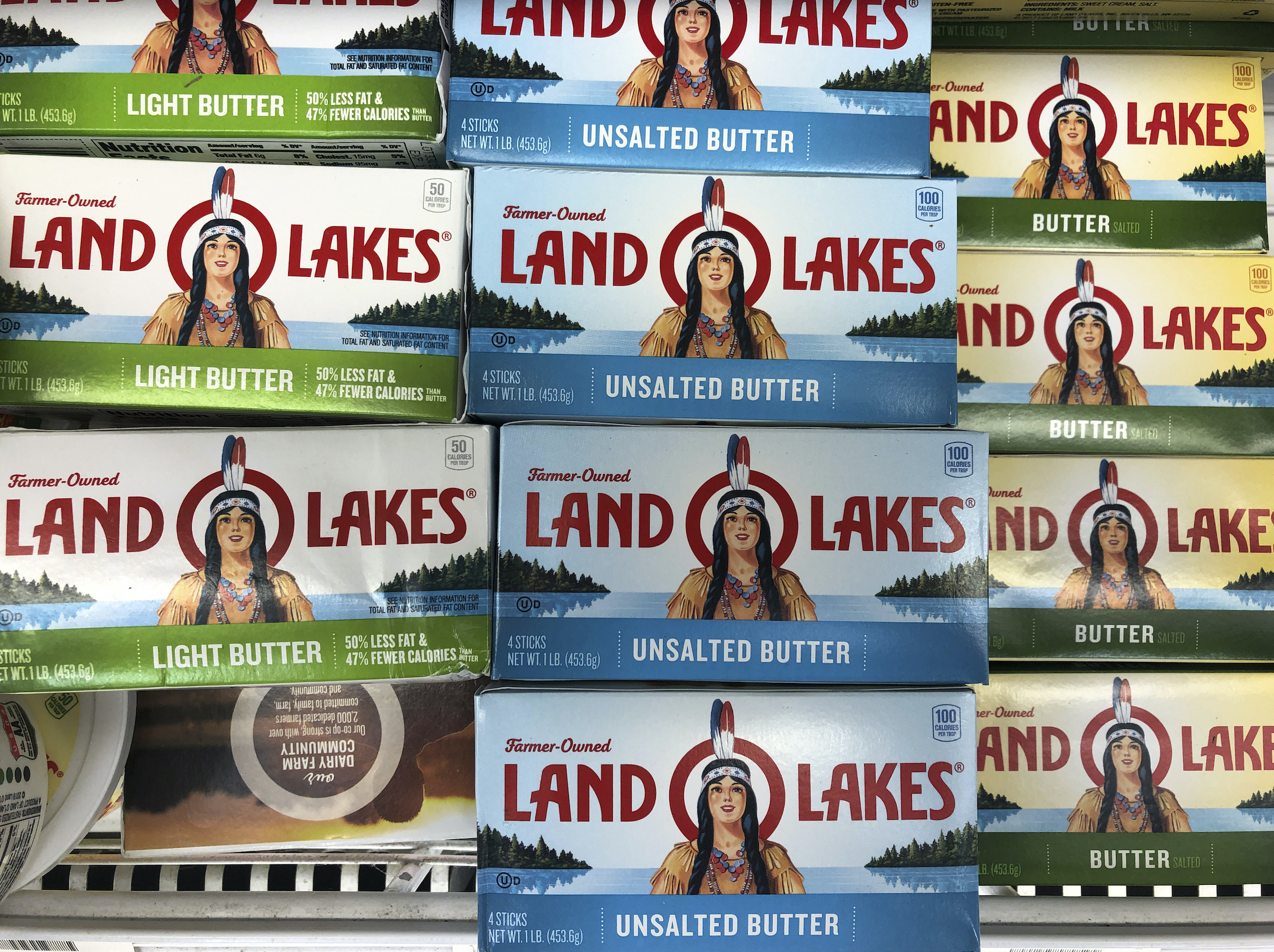
The son of the man who drew the Land O’Lakes butter label featuring a Native American woman is speaking out after the company removed the image following complaints of racism.
“My Native American father drew the Land O’Lakes maiden. She was never a stereotype,” a Washington Post opinion headline read this week. The opinion article contained Robert DesJarlait’s defense of his father, artist Patrick DesJarlait, following the company’s decision to remove the image and go in a different direction.
“I know the meaning of stereotypes,” DesJarlait said. “I participated in protests against mascots and logos using American Indian images in the early 1990s, including outside the Metrodome in Minneapolis when Washington’s team played the Buffalo Bills in the 1992 Super Bowl. In 1993, I wrote a booklet for the Anoka-Hennepin Indian Education Program about these stereotypes.”
DesJarlait, who is an artist and writer from the Red Lake Ojibwe Nation in northern Minnesota, argued that his father’s redesign of the logo actually turned the main character, named Mia, into a figure more in touch with Native American culture.
“With the redesign, my father made Mia’s Native American connections more specific,” he wrote. “He changed the beadwork designs on her dress by adding floral motifs that are common in Ojibwe art. He added two points of wooded shoreline to the lake that had often been depicted in the image’s background. It was a place any Red Lake tribal citizen would recognize as the Narrows, where Lower Red Lake and Upper Red Lake meet.”
DesJarlait also responded to a specific attack on his father’s art from a North Dakota state representative who said the Land O’Lakes maiden went “hand-in-hand with human and sex trafficking of our women and girls … by depicting Native women as sex objects.”
“How did Mia go from being a demure Native American woman on a lakeshore to a sex object tied to the trafficking of native women?” DesJarlait asked.
DesJarlait said he has frequently spoken out against Native American stereotypes during his life, and Mia didn’t fit the bill.
“Mia wasn’t one of them. Not because she was part of my father’s legacy as a commercial artist and I didn’t want to offend him. Mia simply didn’t fit the parameters of a stereotype,” he said.
“Maybe that’s why many Native American women on social media have made it clear that they didn’t agree with those who viewed her as a romanticized and/or sexually objectified stereotype. Instead, Mia seems to have stirred a sense of remembrance and place, one that they found reassuring about their existence as Native American women.”

